Detailed explanation of redis data structure knowledge with pictures and texts
This article brings you relevant knowledge about Redis, which mainly introduces related issues about data structures, including strings, lists, hashes, ordered sets, etc. Content, I hope it will be helpful to everyone.
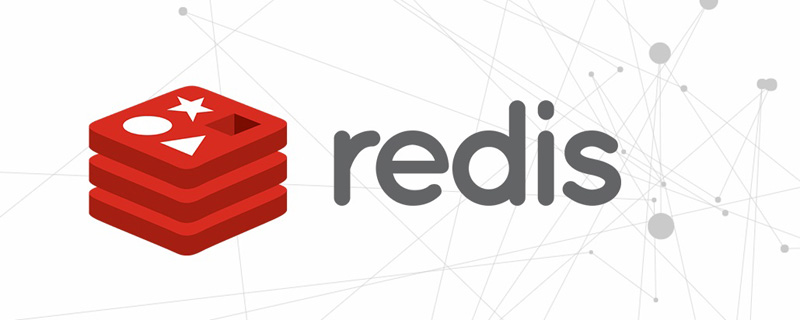
Recommended learning: Redis learning tutorial
Redis data structure: String (string), List (list), hash (Hash), Set (set), Shorted Set (ordered set)
Underlying data structure: simple dynamic string, doubly linked list, compressed list, hash table, skip list, integer array

1. Hash table: A hash table is actually an array, and each element in the array is called a hash bucket. 
Hash conflicts and rehash may cause operation blocking.
The method redis solves hash conflicts is chain hashing, while rehash is to increase the number of existing hash buckets. 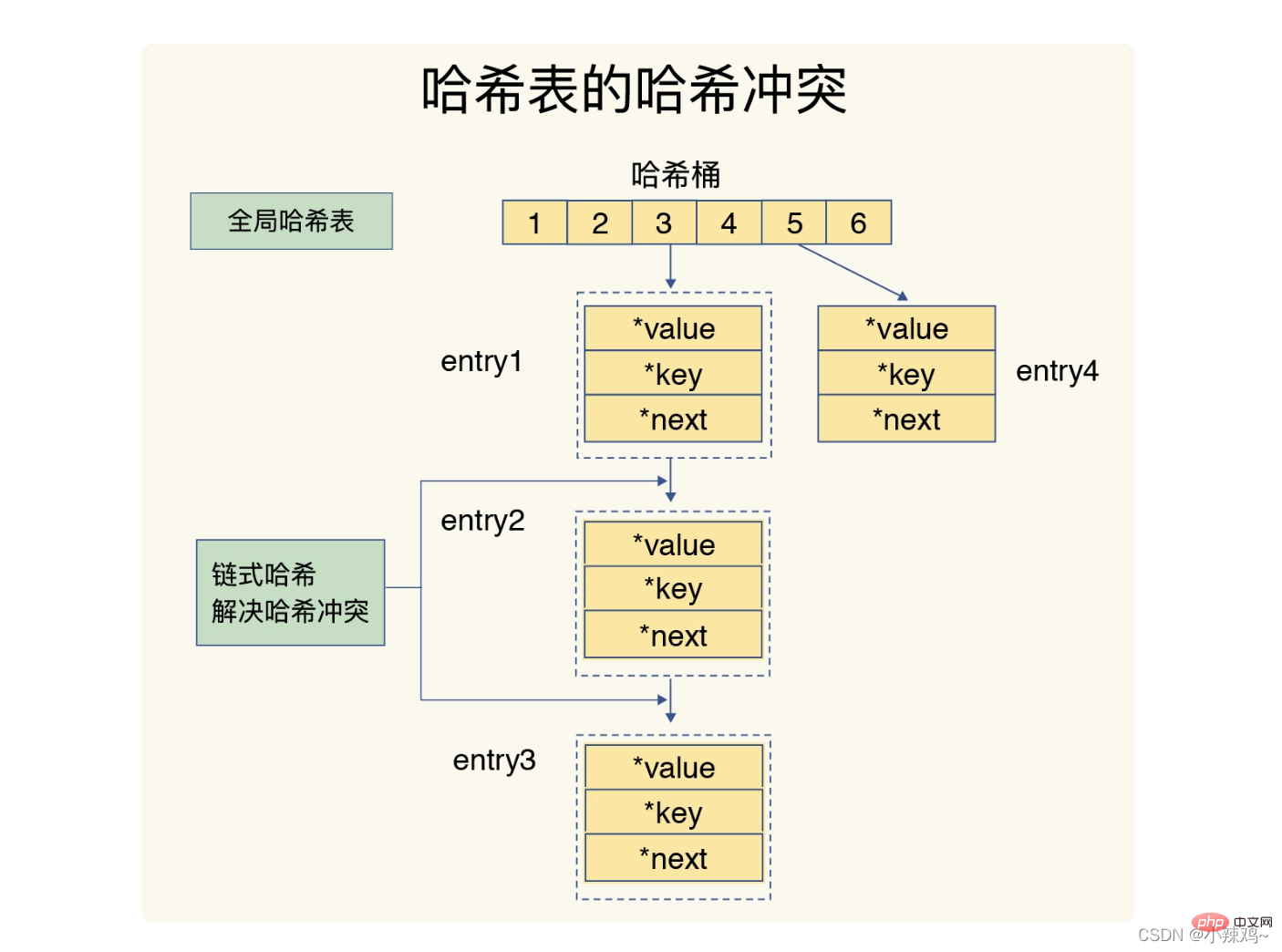
Rehash operation steps: 1. Allocate larger space to the hash table, for example, twice the size of the current hash table
2. Remap the data in hash table 1 And copy it to hash table 2
3. Release the space of hash table 1
The second step involves a large number of data copy operations. If all the data in hash table 1 is migrated at once, it will cause thread blocking. , other requests cannot be serviced. In order to avoid this problem, redis uses progressive rehash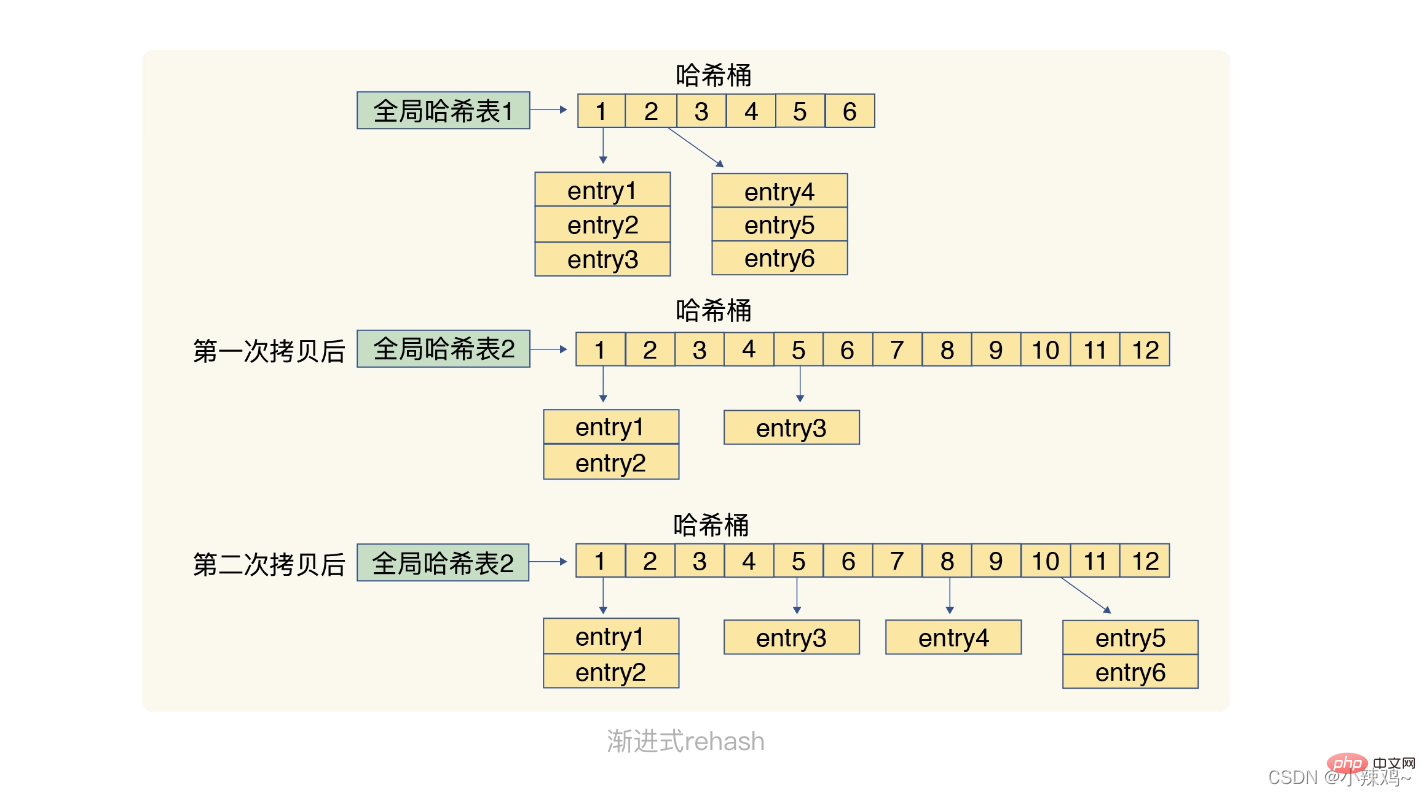
The complexity of integer arrays and doubly linked lists is O(N)
The compressed list has three data in the header, namely the list length, The offset at the end of the list and the number of entries in the list
There is also an element zlend at the end of the compressed list to represent the end of the list
Skip list: An ordered linked list can only search for elements one by one, while a jump list is A multi-level index is added on the basis of the linked list, and the data can be quickly positioned through several jumps in the index position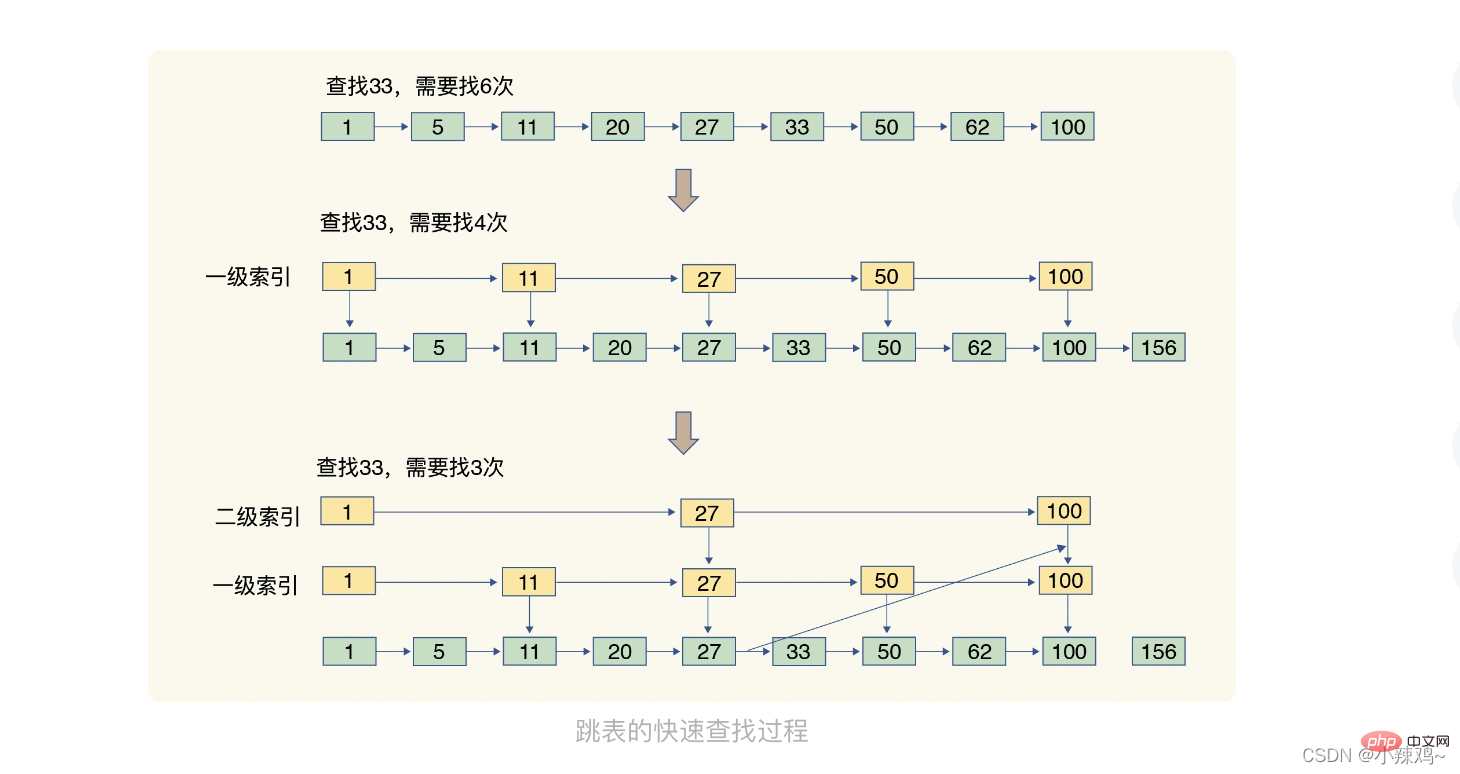
The time complexity of the following five structures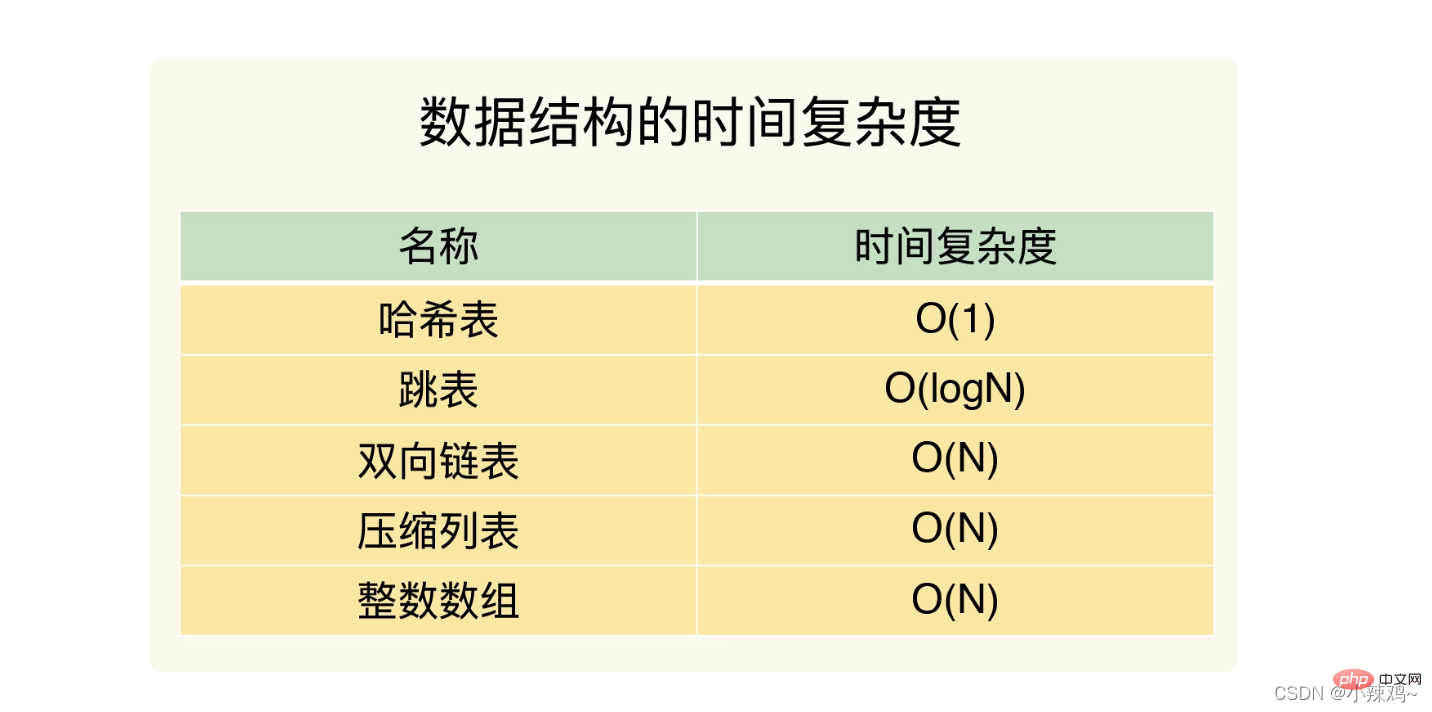
String Type
String type is not suitable for all scenarios. It has an obvious shortcoming that it consumes a lot of memory space when saving data. Because the String type requires additional memory space to record data length, space usage and other information, this information is also called metadata.
When the saved data contains characters, string will be saved using a simple dynamic string SDS structure 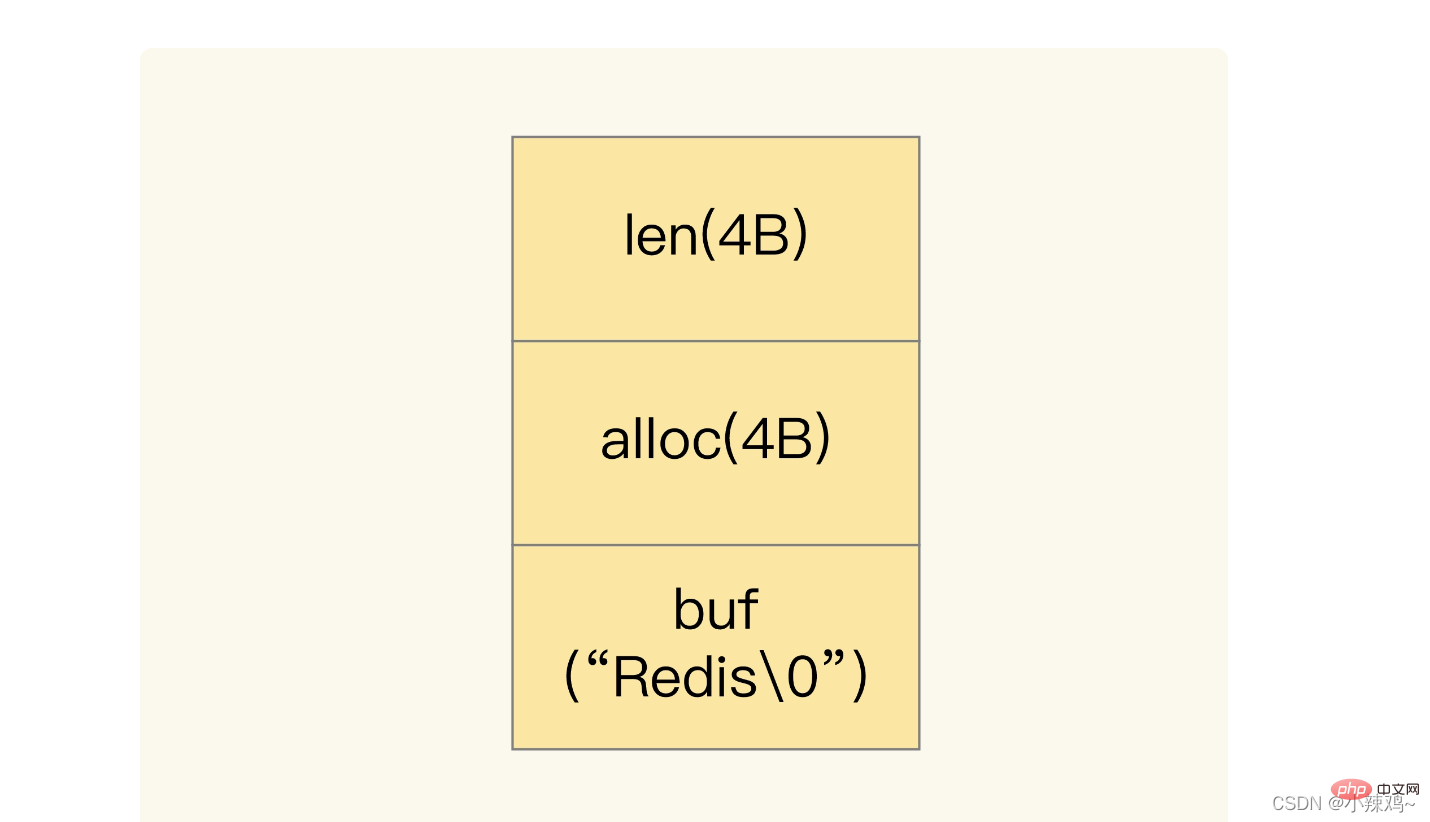
len is the used length of buf alloc is the actual allocated length of buf
Because redis There are many data types, and different data types have the same metadata to record, so redis will use a RedisObject structure to uniformly record these metadata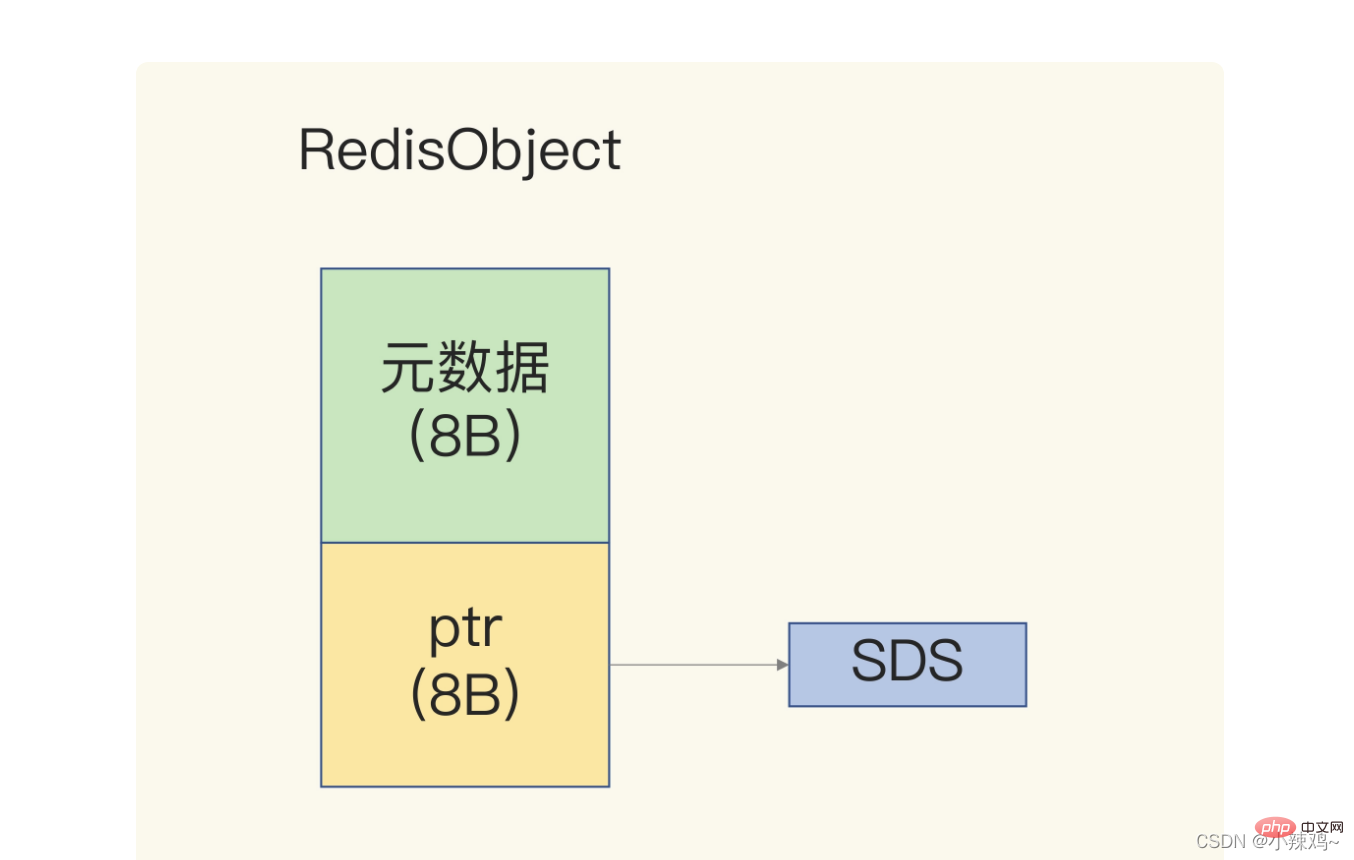
When saving the Long type, the RedisObject pointer Just assign the value directly to integer data, so that no extra pointer is needed to point to the integer, which saves the space overhead of the pointer.
If the saved string is less than 44 bytes, sds and metadata will be allocated to a continuous memory area, called embstr encoding
If the saved string is larger than 44 bytes, SDS and metadata will be Stored separately, called raw encoding
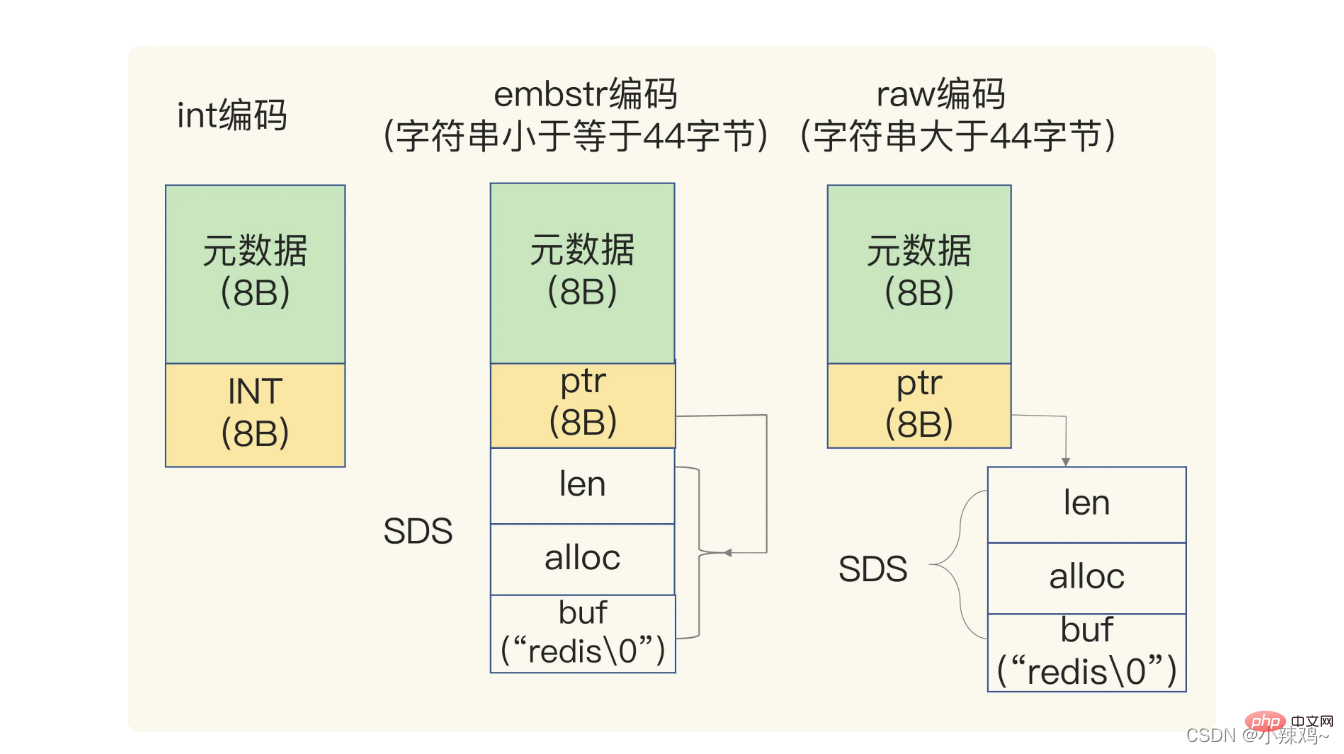
In addition, redis will use a global hash table to save all key-value pairs. Each item in the hash table is a dictEntry structure, which is used to point to a key-value pair. You can see the key value. next will use 24 bytes, but actually occupies 32 bytes. This is because when jemalloc allocates memory, it will find a power of 2 that is larger than N but closest to N according to the number of bytes we apply for. space, which can reduce the number of frequent allocations. 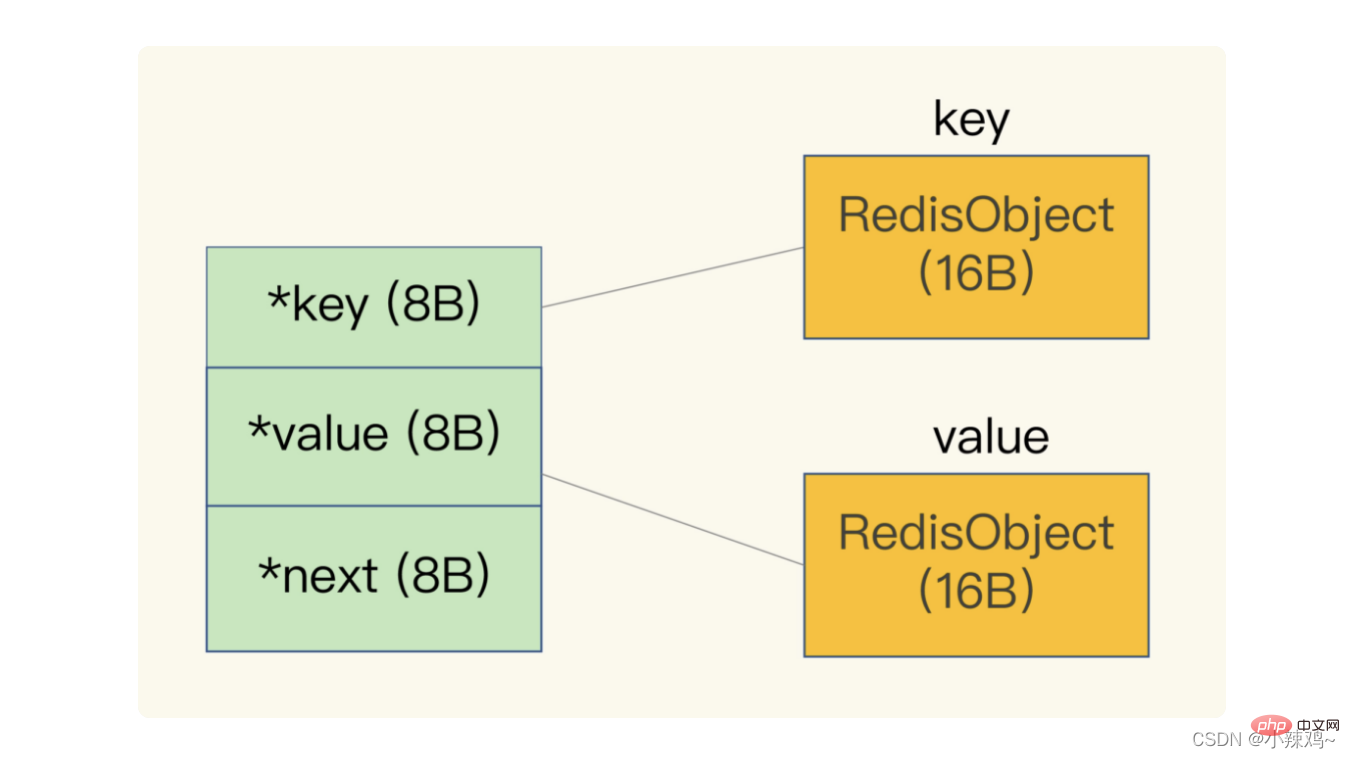
What data structure can be used to save memory?
Compressed list: zlbytes represents the length of the list, zltail represents the tail offset of the list, zllen represents the number of entries in the list, zlend represents the end of the list, perv_len represents the length of the previous entry, encoding represents the encoding method, and len represents The length of itself, the key is the actual stored data. Redis implements list, hash and Sorted Set based on compressed list

How to save single-value key-value pairs using set types?
When saving single-value key-value pairs, you can use Hash's secondary encoding, which is to split the single-value value into two parts. The first part is used as the Hash key, and the latter part is used as the Hash value.
以图片 ID 1101000060 和图片存储对象 ID 3302000080 为例,我们可以把图片 ID 的前 7 位(1101000)作为 Hash 类型的键,把图片 ID 的最后 3 位(060)和图片存储对象 ID 分别作为 Hash 类型值中的 key 和 value。127.0.0.1:6379> info memory# Memoryused_memory:1039120127.0.0.1:6379> hset 1101000 060 3302000080(integer) 1127.0.0.1:6379> info memory# Memoryused_memory:1039136
The Hash type has two underlying implementation structures: 1. Compressed list 2. Hash table
There are two thresholds in the hash list. Once these two thresholds are exceeded, it will be converted from the compressed list to Hash Table
hash-max-ziplist-entries indicates the maximum number of elements in the hash list set when saved in a compressed list
hash-max-ziplist-value indicates the maximum length of a single element of the hash set when saved in a compressed list
Set statistics mode
1. Aggregation statistics
2. Sorting statistics
3.Binary state statistics
4. Cardinality statistics
Three extended data types of redis
1.Bitmap:
2.HyperLogLog
3.GEO:
GEO data type for LBS applications
The underlying structure of GEO is implemented based on Sorted Set. Sorted Set can be sorted according to the weight of elements and supports range query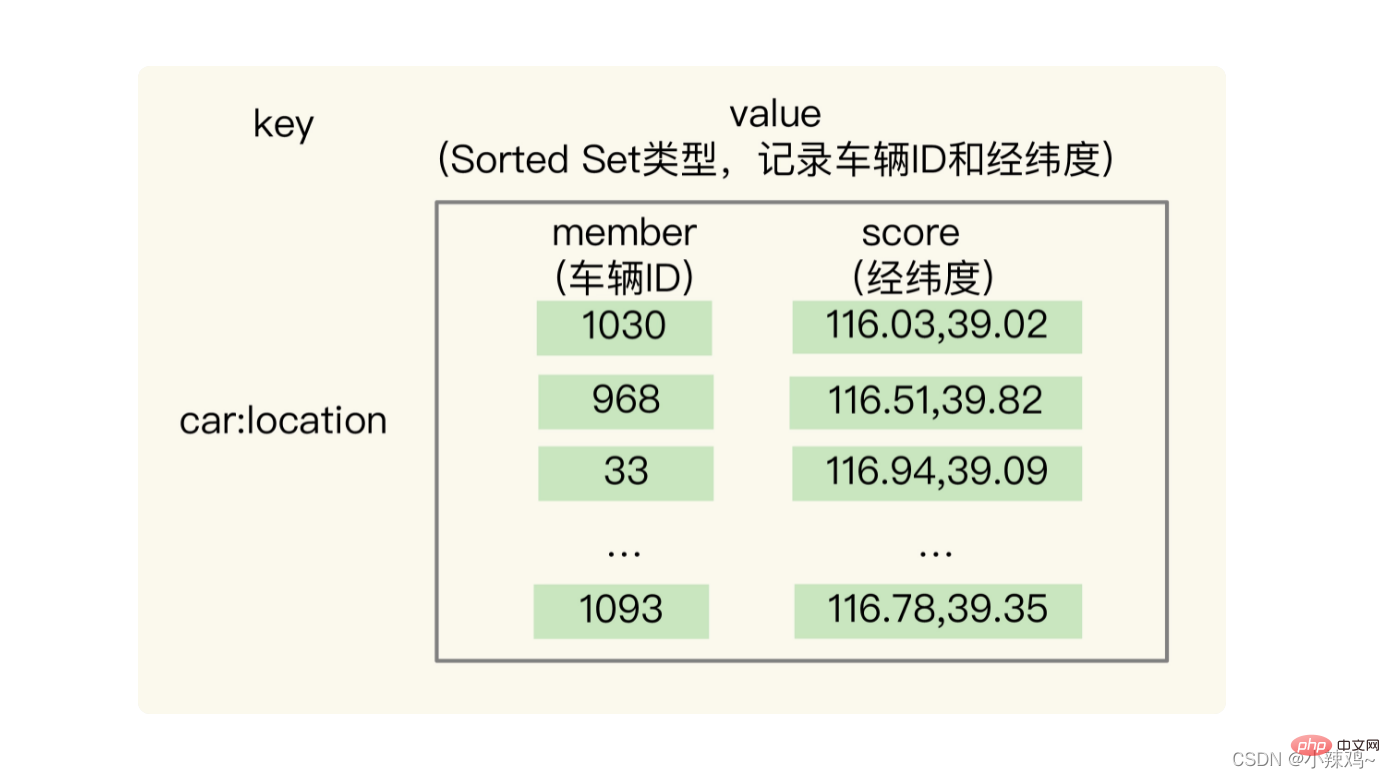
The weight score of sorted Set is a floating point number (float type), while the longitude and latitude are two numbers , need to use GeoHash encoding
GeoHash encoding is performed through "two-partition interval, interval encoding" method.
First convert the longitude and latitude into a coded format, and then perform the crossover 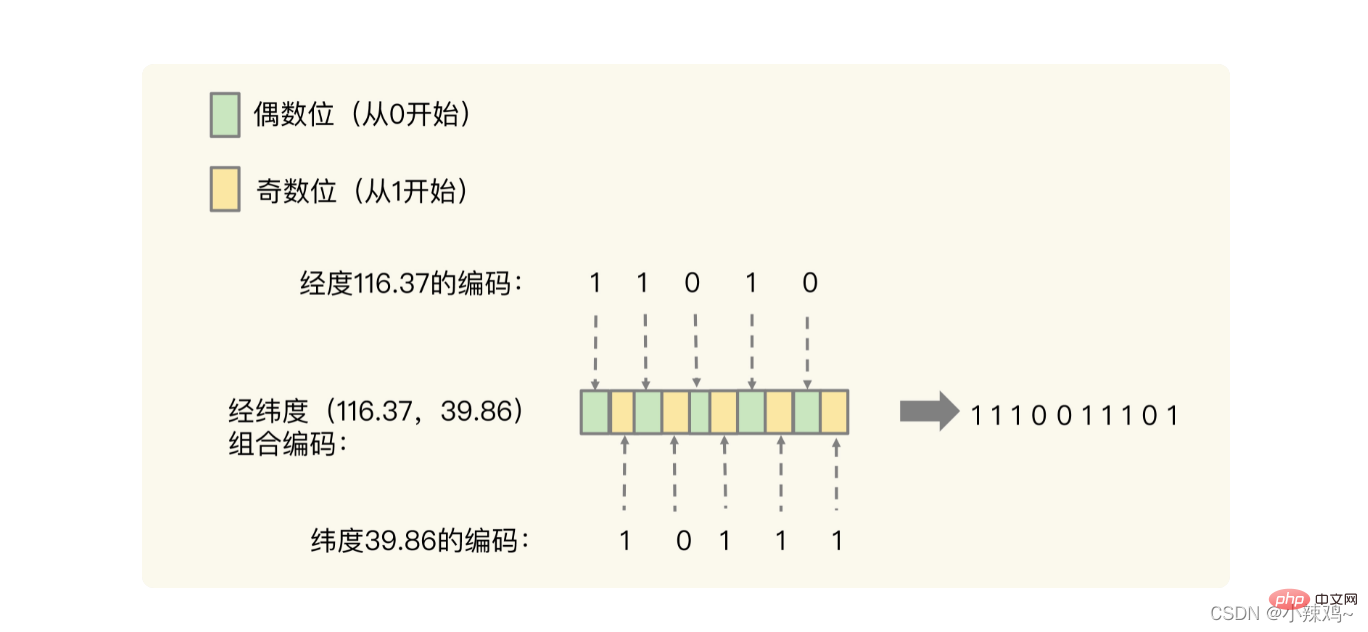
In fact, the purpose of the crossover is the concept shown in the figure below. After the crossover, you can actually locate the two-dimensional In a square in space, we use the Sorted Set range query to obtain similar coding values. In actual geographical space, they are also adjacent squares. For example, 1110011101 and 1111011101 are adjacent in space.
However, there may be situations where the codes are adjacent, but the squares are not actually adjacent. So in order to avoid this situation from happening, we can query 4 or 8 squares around a given longitude and latitude at the same time. 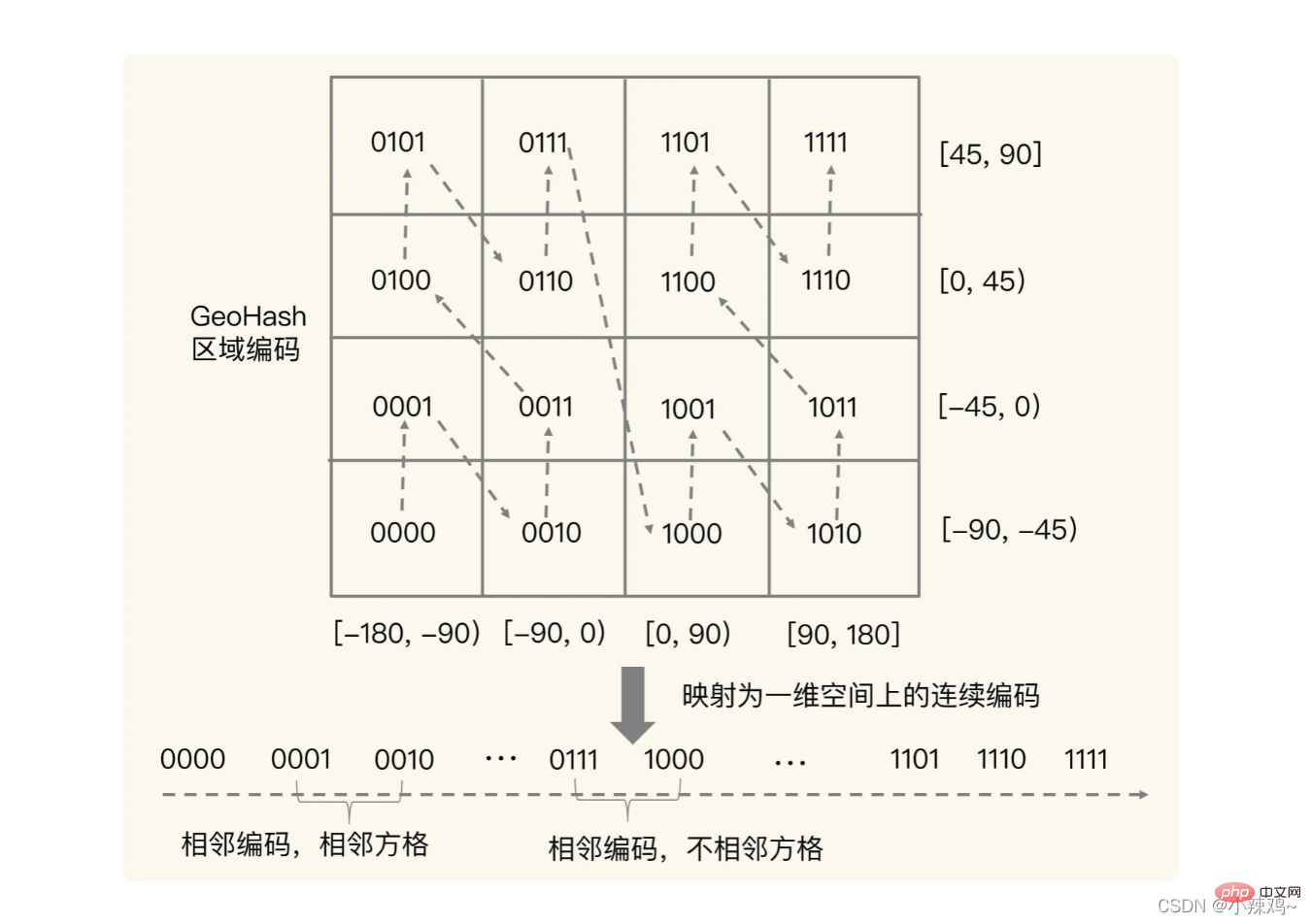
How to operate the GEO type?
When using the GEO type, the two commands we often use are GEOADD and GEORADIUS
GEOADD: used to record a set of longitude and latitude information and a corresponding ID into a GEO type collection.
Usage: Assume that the vehicle ID is 33 and the latitude and longitude location is (116.034579, 39.030452). We can use a GEO collection to save the latitude and longitude of all vehicles. The collection key is cars:locations. You only need to execute the following command to save the current longitude and latitude position of the vehicle with ID number 33 into GEO.
GEOADD cars:locations 116.034579 39.030452 33
GEORADIUS: Based on the location of the input longitude and latitude, query other elements within a certain range centered on this longitude and latitude
How to customize the data type?
The basic object structure of redis includes type, encoding, lru and refcount, *ptr
Develop a data structure named NewTypeObject, specifically there are the following four steps
How to save time series data in redis?
1. Saving based on Hash and Sorted Set: Why should we query based on two data structures?
The Hash type can realize fast single-key query, which meets the needs of time series single-key query 
However, the hash type has a shortcoming that it does not support range query. In order to support timestamp range query, we need Through Sorted Set, because it sorts according to the weight score of the elements, 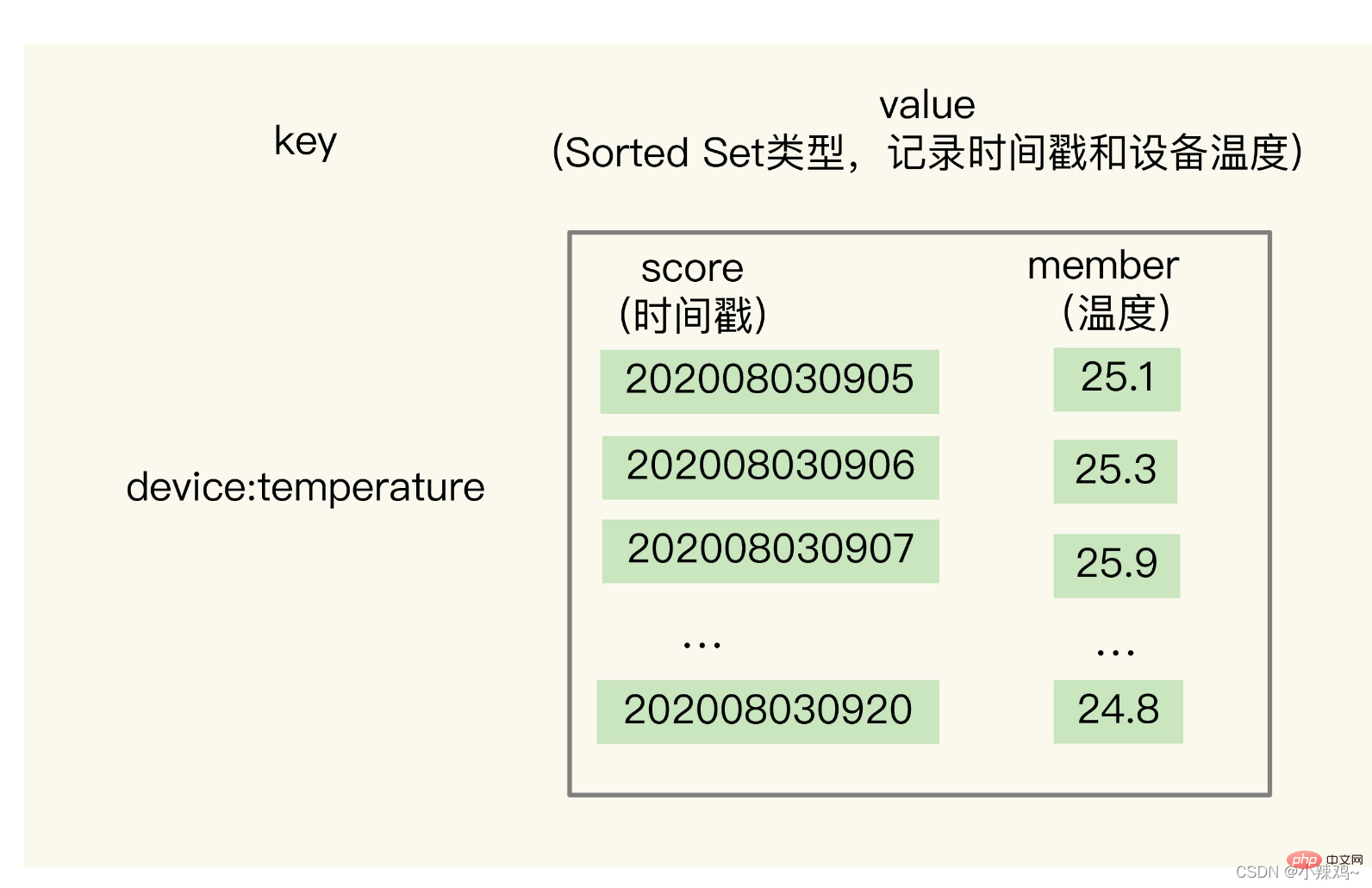
So how do we ensure the atomicity of these two operations?
You need to pass two commands, MULTI and EXEC:
MULTI means start. After receiving this command, redis will put the command into the queue.
EXEC means end. After receiving this command, it will start executing the queue. Command
However, if hash and Sorted Set are used, only range queries are supported and aggregate calculations are not supported. If aggregation calculations are performed on the client, a large amount of network transmission will occur. Therefore, aggregate calculations can be performed on redis through RedisTimeSeries.
Recommended learning: Redis learning tutorial
The above is the detailed content of Detailed explanation of redis data structure knowledge with pictures and texts. For more information, please follow other related articles on the PHP Chinese website!

Hot AI Tools

Undresser.AI Undress
AI-powered app for creating realistic nude photos

AI Clothes Remover
Online AI tool for removing clothes from photos.

Undress AI Tool
Undress images for free

Clothoff.io
AI clothes remover

AI Hentai Generator
Generate AI Hentai for free.

Hot Article

Hot Tools

Notepad++7.3.1
Easy-to-use and free code editor

SublimeText3 Chinese version
Chinese version, very easy to use

Zend Studio 13.0.1
Powerful PHP integrated development environment

Dreamweaver CS6
Visual web development tools

SublimeText3 Mac version
God-level code editing software (SublimeText3)

Hot Topics
 1384
1384
 52
52
 How to build the redis cluster mode
Apr 10, 2025 pm 10:15 PM
How to build the redis cluster mode
Apr 10, 2025 pm 10:15 PM
Redis cluster mode deploys Redis instances to multiple servers through sharding, improving scalability and availability. The construction steps are as follows: Create odd Redis instances with different ports; Create 3 sentinel instances, monitor Redis instances and failover; configure sentinel configuration files, add monitoring Redis instance information and failover settings; configure Redis instance configuration files, enable cluster mode and specify the cluster information file path; create nodes.conf file, containing information of each Redis instance; start the cluster, execute the create command to create a cluster and specify the number of replicas; log in to the cluster to execute the CLUSTER INFO command to verify the cluster status; make
 How to clear redis data
Apr 10, 2025 pm 10:06 PM
How to clear redis data
Apr 10, 2025 pm 10:06 PM
How to clear Redis data: Use the FLUSHALL command to clear all key values. Use the FLUSHDB command to clear the key value of the currently selected database. Use SELECT to switch databases, and then use FLUSHDB to clear multiple databases. Use the DEL command to delete a specific key. Use the redis-cli tool to clear the data.
 How to use the redis command
Apr 10, 2025 pm 08:45 PM
How to use the redis command
Apr 10, 2025 pm 08:45 PM
Using the Redis directive requires the following steps: Open the Redis client. Enter the command (verb key value). Provides the required parameters (varies from instruction to instruction). Press Enter to execute the command. Redis returns a response indicating the result of the operation (usually OK or -ERR).
 How to use redis lock
Apr 10, 2025 pm 08:39 PM
How to use redis lock
Apr 10, 2025 pm 08:39 PM
Using Redis to lock operations requires obtaining the lock through the SETNX command, and then using the EXPIRE command to set the expiration time. The specific steps are: (1) Use the SETNX command to try to set a key-value pair; (2) Use the EXPIRE command to set the expiration time for the lock; (3) Use the DEL command to delete the lock when the lock is no longer needed.
 How to read redis queue
Apr 10, 2025 pm 10:12 PM
How to read redis queue
Apr 10, 2025 pm 10:12 PM
To read a queue from Redis, you need to get the queue name, read the elements using the LPOP command, and process the empty queue. The specific steps are as follows: Get the queue name: name it with the prefix of "queue:" such as "queue:my-queue". Use the LPOP command: Eject the element from the head of the queue and return its value, such as LPOP queue:my-queue. Processing empty queues: If the queue is empty, LPOP returns nil, and you can check whether the queue exists before reading the element.
 How to read the source code of redis
Apr 10, 2025 pm 08:27 PM
How to read the source code of redis
Apr 10, 2025 pm 08:27 PM
The best way to understand Redis source code is to go step by step: get familiar with the basics of Redis. Select a specific module or function as the starting point. Start with the entry point of the module or function and view the code line by line. View the code through the function call chain. Be familiar with the underlying data structures used by Redis. Identify the algorithm used by Redis.
 How to implement the underlying redis
Apr 10, 2025 pm 07:21 PM
How to implement the underlying redis
Apr 10, 2025 pm 07:21 PM
Redis uses hash tables to store data and supports data structures such as strings, lists, hash tables, collections and ordered collections. Redis persists data through snapshots (RDB) and append write-only (AOF) mechanisms. Redis uses master-slave replication to improve data availability. Redis uses a single-threaded event loop to handle connections and commands to ensure data atomicity and consistency. Redis sets the expiration time for the key and uses the lazy delete mechanism to delete the expiration key.
 How to make message middleware for redis
Apr 10, 2025 pm 07:51 PM
How to make message middleware for redis
Apr 10, 2025 pm 07:51 PM
Redis, as a message middleware, supports production-consumption models, can persist messages and ensure reliable delivery. Using Redis as the message middleware enables low latency, reliable and scalable messaging.




